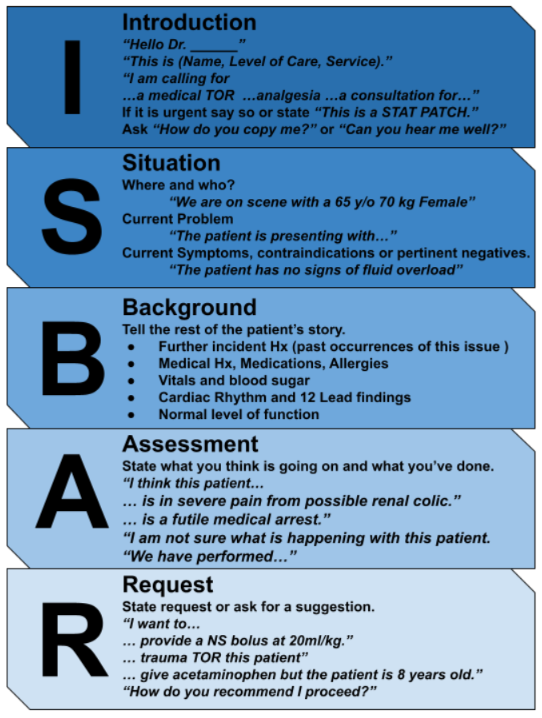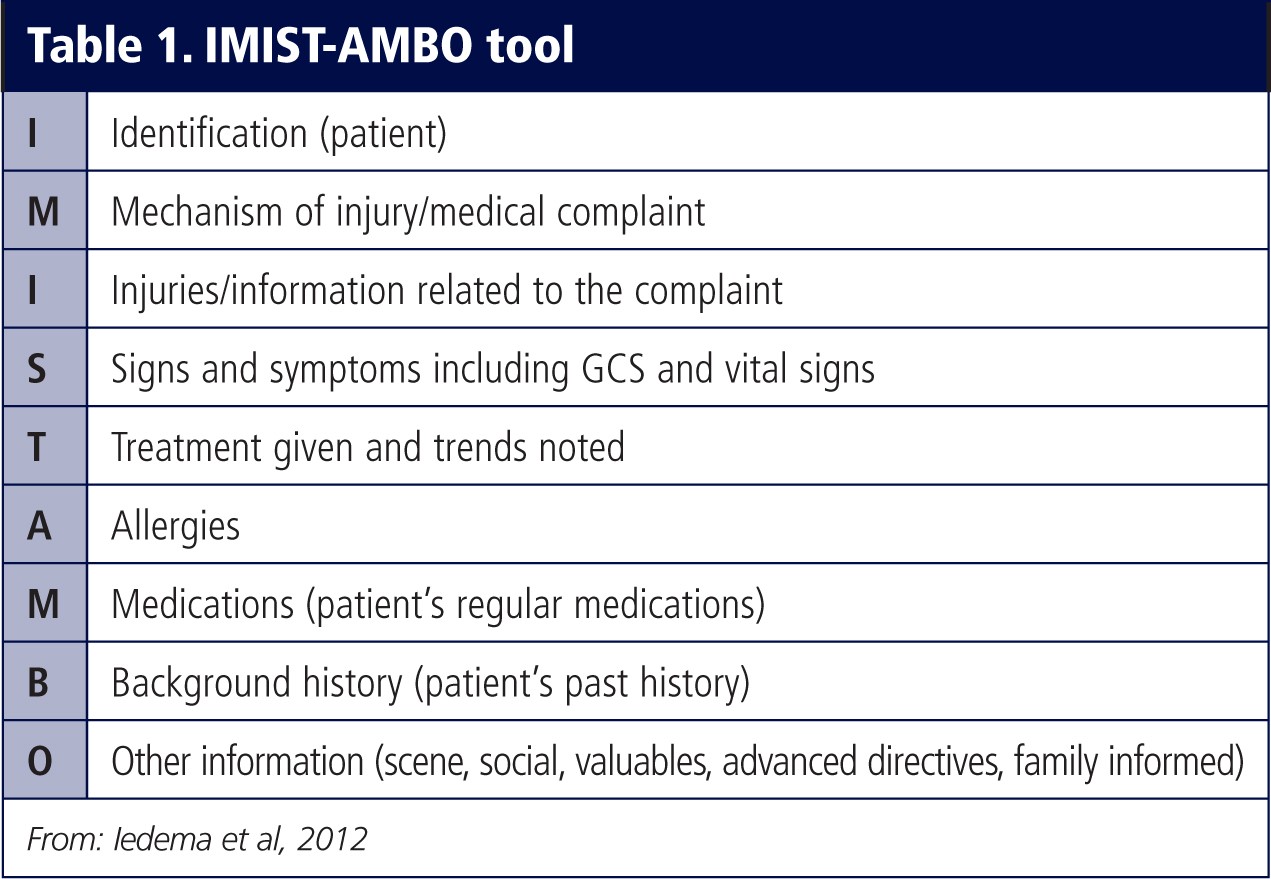
October Tip of the Month - The Handover
The successful handover
Effective communication between paramedics and receiving staff is crucial in the delivery of emergency medicine. The interaction of the patient report serves as a vital link in the chain of patient care, ensuring that critical information regarding a patient’s condition is accurately relayed and understood. Clear communication impacts positively on patient outcomes, patient safety, and promotes timely and high quality care. As emergencies can be fast paced and stressful, communication failures often result from a disorganized approach, therefore structure is paramount in ensuring a successful patient report.
To carry out well-prepared handovers, you must know what information to include and prioritize. Clinical information provided to receiving staff should be timely, accurate, and contextual, and the amount of irrelevant or unnecessary information should be minimized.
A successful patient report should include the identity of the patient, the mechanism of injury, assessment findings, treatments/interventions performed including their results, the patient’s most recent vital signs and a differential diagnosis. There are a number of tools that paramedics can utilize including IMIST AMBO and SBAR, which can be reviewed below.
By using an organization tool to structure our patient reports, we can help patients receive relevant and consistent care and promote a culture of teamwork between paramedics and hospital staff.


Previous Tips
-
Winter Emergencies: Recognition and Care for Hypothermia and Frostbite
-
November Tip of the Month - Not "Just" the Flu: Recognizing High-Risk Respiratory Illness
-
October Tip of the Month - Diabetic Emergencies
-
September Tip of the Month - Sepsis
-
August Tip of the Month - Mass Casualty Incidents
-
July Tip of the Month - Breaking down Burns
-
June tip of the month - High-Quality CPR & Defibrillation
-
May Tip of the Month - Prehospital Trauma Management
-
April Tip of The Month - Paramedic resilience strategies; recognizing and managing burnout
-
March 2025 Tip of The Month - Identifying Intimate Partner Violence (IPV) in Prehospital Care